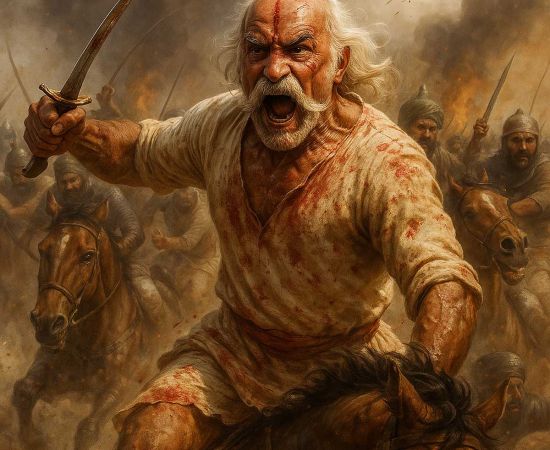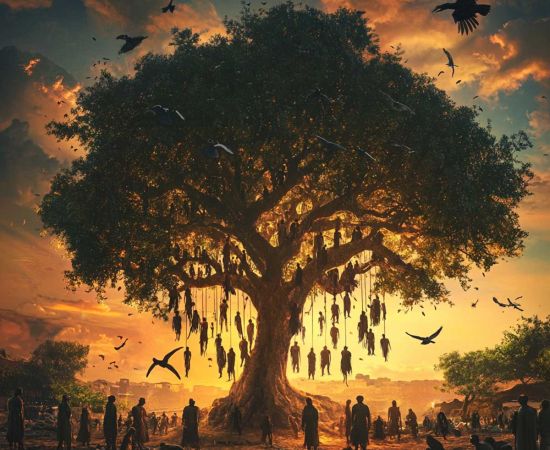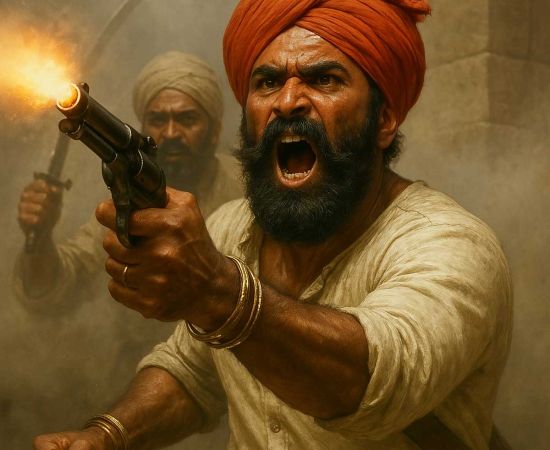MORE COVERAGE
Twitter Coverage
Satyaagrah
Written on
Satyaagrah
Written on
Satyaagrah
Written on
Satyaagrah
Written on
Satyaagrah
Written on
JOIN SATYAAGRAH SOCIAL MEDIA
Freedom of expression and Secularism died with the assassination of Mahashay Rajpal, the publisher of Rangeela Rasool
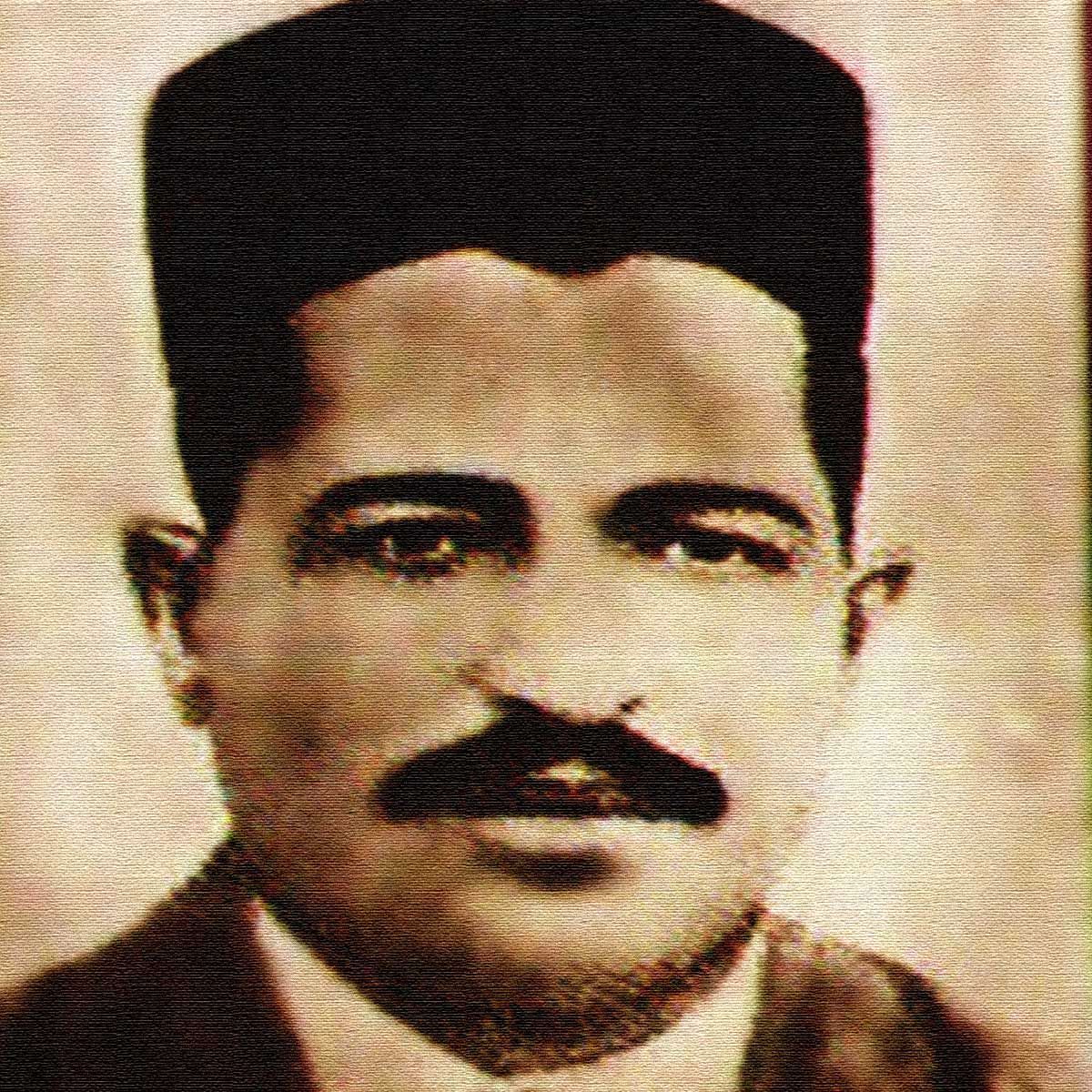
Swargiya Mahashay Rajpal Malhotra was born in a Khatri family in Amritsar on the Panchmi tithi of Ashadh Samvat (AD 1885). Since childhood Mahashay Rajpal ji was very intelligent, hard working, perseverant and was a great student. His father, Swargiya Lala Ramdas Khatri, passed away when he was quite young.
In connection with his work, he met an Amritsar based, famous Aryasamaji Hakim Fatehchand, who was in need of an employee. He secured a job with Hakim ji on a monthly income of twelve rupees and with that, he earned a special place in Hakim ji’s heart with his qualities of duty, hard work, honesty and for being perseverant.
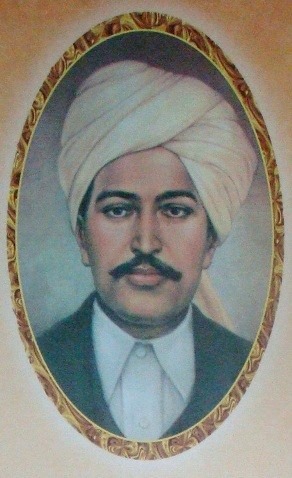 Mahashay Rajpal |
At the time, Hindi was not very prevalent in Punjab and there were hardly any Hindi publishers. Mahashay Rajpal ji in 1912 started “Rajpal and Sons” from Lahore. He would publish Hindi, English, Urdu and Punjabi books on social, political and religious topics. As a publisher he never shied away from controversial topics, such as publishing one of India’s first books on family planning titled “Santan Sankhya ka Seema Bandhan”.
Krishna Teri Gita Jalani Padegi”, “Unnisvi Sadi Ka Lumpat Maharishi” and by anonymous authors and publishers were published and freely distributed for 2-3 years through all Mosques in India.
In 1923, Muslims published three particularly offensive books to Hindus. “Krishna teri geeta jalani padegi” used derogatory and vulgar language against Shri Krishna and other Hindu deities and “Unnisvi Sadi Ka Lumpat Maharishi” and “Sita Ka Chinaala” which contained derogatory remarks on Arya Samaj founder Swami Dayanand Saraswati (incidentally written by an Ahmadi) and containing obscene and appalling sketches of Hindu deities and sickening abuse and vile character assassination of Ma Sita. This was the time before Sec 295A was introduced in the IPC.
When this matter reached Gandhi he justified it with the sickular logic of “Freedom of Speech”.
To respond to this provocation, Pandit Chamupati Lal, a close friend of Mahashay Rajpal, wrote a short biography of the Islamic Prophet, Mohammed. Titled “Rangeela Rasool” this short pamphlet was a satirical take on the domestic life of Mohammed. Because of the sensitive nature of the pamphlet, Pandit Chamupati made Mahashay Rajpal promise that he would never reveal the name of the author.
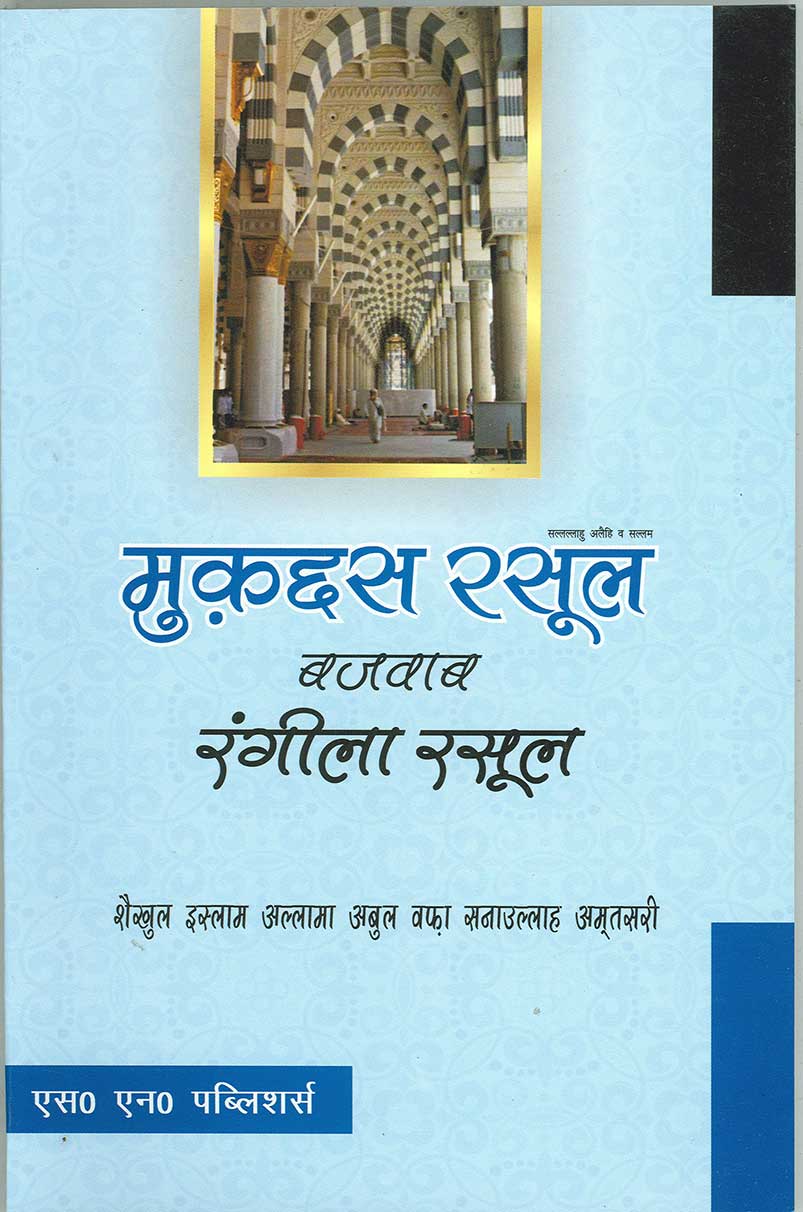 रंगीला रसूल – वह पुस्तक जो बैन है भारत समेत पाकिस्तान, बांगलादेश के साथ कई देशों में |
The pamphlet was originally published anonymously under the name “doodh ka doodh aur panee ka panee”. On the surface, Rangeela Rasool had a laudatory tone of Mohammed’s life but at the same time pointing out uncomfortable truths about his domestic life.
Though historically accurate and written after due research of hadiths, this caused an outrage among the Muslims of Lahore. The first edition of the pamphlet sold out quickly, however a mere one month after the publication of the pamphlet, in June 1924 Gandhi with his sick policy of extreme Muslim appeasement decided to spring into action and threw out of the window his earlier justification of abuse of Hindu faith by invoking the right to Freedom of Expression and Speech as well as Ahinsa. He wrote a long article in his newspaper column “Young India” strongly condemning Rangeela Rasool saying ” An ordinary and petty publisher in order to earn a few more bucks has insulted Prophet Mohammad and Muslims should punish those who write such books themselves!”. Gandhi’s these few lines implied tacit approval of ‘Hinsa’ by Muslims towards Hindus.
Yes, Gandhi was advising ‘Hinsa‘ with double standards – Muslims can be violent towards Hindus but the vice versa is not applicable. As Gandhi always vomited in all his speeches later too that Hindus should forever remain Ahinsawadi and cowards and not have the thought of even self-defence against Muslims!!!
It is also worth pointing out that Mohandas completely ignored similar provocative articles written by Muslims to which this was a response. Before the second edition could be printed, the colonial government banned the pamphlet in late June 1924. This ban stands to this day (Although in the open internet era copies can be found easily. By July 1924, Muslim scholars filed a case on the book “Rangeela Rasool” in the lower Courts of Lahore in 1924, where Mahashay Rajpal was held guilty of Section 153A IPC (promoting enmity between groups) and he appealed against it in the Lahore High Court.
Gandhi then again wrote another provocative article hinting at this in “Young India” on 3rd Aug 1924 that “When a person does not get justice from Courts, he should try himself to become the judge.” He was indirectly exhorting Muslims to take Law into their own hands.
During the trial, he was offered to give up the name of the real author of Rangeela Rasool and go scot-free, but he declined it and upheld his promise. In legal proceedings that lasted close to three years, in May 1927 Mahashay Rajpal was acquitted of all charges. The judge contended that Sec. 153A does not prohibit historical analysis of ‘prophets’ of different religions and if it were to be so applied, works of serious historians could also be subject to it.
As soon as justice was delivered, Muslims all over the country went off into a frenzy holding large protests against the judgement. In several places, riots broke out after provocative speeches given by religious leaders. Al-Jamiat an official arm of the Jamiat-Ulaima-i-Hind warned in an article that “under sharia the punishment for insulting the prophet is death and it is legally permissible to kill those who insult the prophet”.
Maulana Mohammad Ali, once held up by Mohandas Gandhi as a great “ambassador of Hindu-Muslim unity” in a provocative speech at the Jama Masjid in July 1927 warned that should the judgement not be reversed, Muslims would be compelled to take the law in their own hands. Even avowed secularists like Motilal Nehru remarked to his son that “the Musslmans of India have all gone mad”.
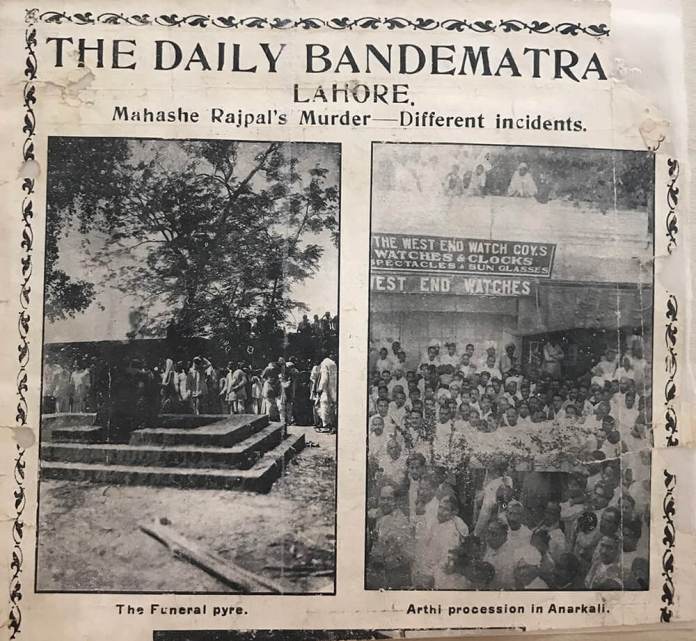 The scenes following the murder of Mahashay Rajpal |
The primary organized opposition to the judgement was driven by the Khilafatists and the Ahmadis. Ahmadis printed posters in several cities urging a total economic boycott of Hindus in response to the perceived insult to their prophet. The then spiritual head of the Ahmadiya community, Mirza Bashir ud-din Ahmad, wrote to the British viceroy in support of an anti-blasphemy law where insult to the “prophet” should be clearly mentioned and made illegal.
In a cruel twist of karma, this is the same law that is used today in Pakistan to persecute the Ahmadiya community. The British introduced 295A, criminalizing future speech deemed insulting to religious groups, passed easily in parliament with widespread support. Lala Lajpat Rai, Hindu Mahasabha leader, called the legislation a “temporary measure” necessary to “satisfy some hyper sensitive folk”.
He also introduced an amendment to introduce a sunset clause of 1930 which was defeated. Few members objected to it on the grounds that it was a dangerous concession given to the Muslim community.
By this time Mahashay Rajpal was a marked man. In 1927, the same year he was acquitted, there were two unsuccessful attempts on his life — a wrestler named Khuda Baksh attacked him in September 1927 when he was sitting in his shop but Khatri Rajpal ji caught him and handed him over to the authorities. Khuda Baksh was convicted and sentenced to ten years in prison.
The next month, a Muslim man named Aziz Ahmed attacked Swami Satyanand ji mistaking him to Khatri Rajpal. Luckily, the attack was not fatal and Swami ji recovered after a couple of months. On April 6th, 1929 a 19 year old carpenter named Ilm ud din stabbed Mahashay Rajpal on his chest eight times while he was seated in the outer verandah of his shop. Mahashay Rajpal did not survive the attack and attained the lotus feet of Narayan on this day.
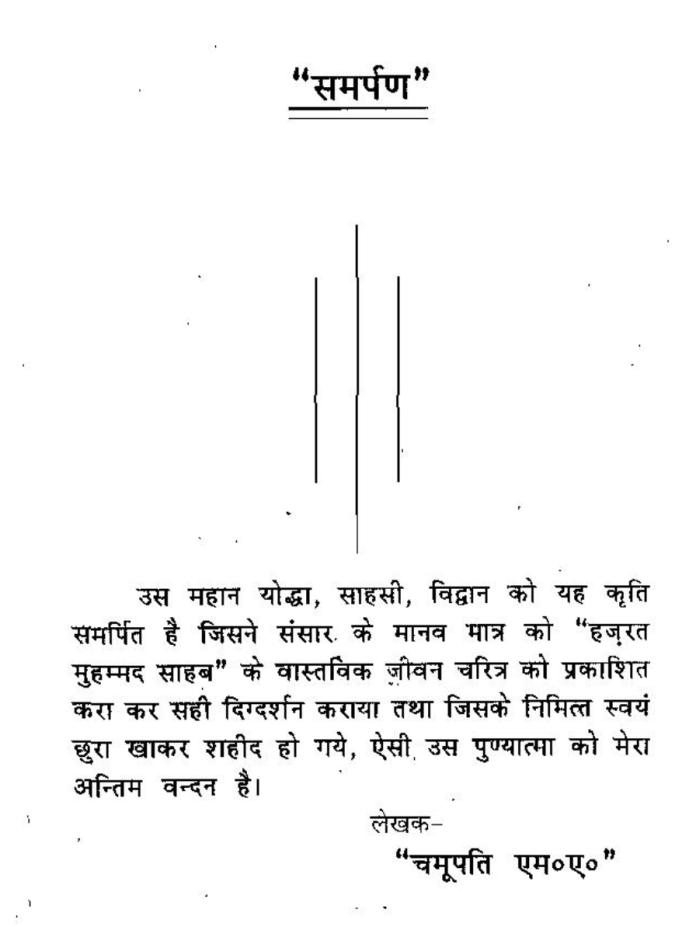 The real author of Rangeela Rasool on Mahashay Rajpal |
Gandhi was in Lahore for around 7 days post this murder but he never went to Mahashay Rajpal’s family to condole his death.Neither did he ever write anything about this.
As word spread among the Hindus of Lahore, a crowd of thousands gathered. Fearing a law and order situation, the British authorities initially declined to give permission for a funeral procession but relented and gave permission for the next day. As the procession went across Lahore, people paid respects by flowering petals from their homes. In an editorial soon after his funeral, journalist and poet Nanak chand Naaz wrote of Mahashay Rajpal –
फ़ख से सर उनके ऊँचे आसमान तक तक हो गए, हिन्दुओं ने जब अर्थी उठाई राजपाल।
फूल बरसाए शहीदों ने तेरी अर्थी पे खूब, देवताओंने तेरी जय जय बुलाई राजपाल।
हो हर इक हिन्दू को तेरी ही तरह दुनिया नसीब जिस तरह तूने छुरी सिने पै खाई राजपाल।
तेरे कातिल पर न क्यूँ इस्लाम भेजे लानतें, जब मुजम्मत कर रही हैं इक खुदाई राजपाल।
मैंने क्या देखा की लाखों राजपाल उठने लगे दोस्तों ने लाश तेरी जब जलाई राजपाल।
On the other hand, Mahashay Rajpal’s killer was represented in court by Mohammad Ali Jinnah, who argued for his innocence and at his funeral the poet Mohammad Iqbal, a favourite of Indian liberals today, eulogized the killer. Today his grave is a religious site in Pakistan and Pakistani textbooks eulogize him with the title of “Ghazi”.
The British however feeling threatened by the Hindu fury, executed Mohammad Ilm Din in Lahore Jail on 31st October 1929. Two days later Gandhi wrote in “Young India” that it was a ‘black day’ of history.
After partition, Mahashay Rajpal’s family moved to Delhi from where “Rajpal and Sons” continues to operate today. Almost 70 years after his death, he was awarded the first “International Freedom to Publish Award” by then deputy PM LK Advani. Mahashay Rajpal inspired a generation and continues to inspire people today by his sacrifice.
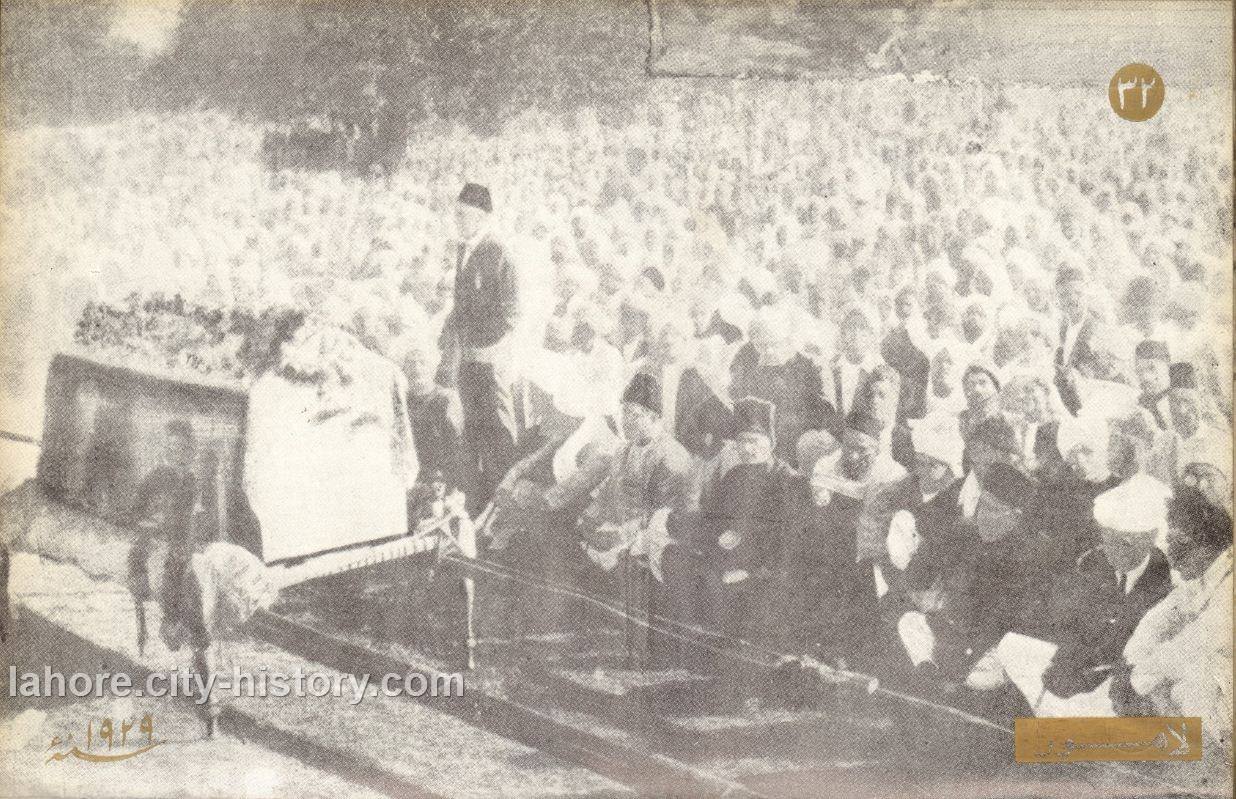 Namaz e Janazah of Ghazi Ilm ud din Shaheed |
[Rare Photo] Namaz-e-Janazah of Ghazi Ilm-ud-din Shaheed (4 December 1908 – 31 October 1929). Allama Iqbal can be seen sitting in front row.
Ilm-ud-din was a young boy from Lahore who killed Mahashay Rajpal an Hindu publisher who published an inflammatory book "Rangeela Rasool" in 1923.
Ilmud-Din’s execution occurred on 31st October 1929 in Mianwali Jail.
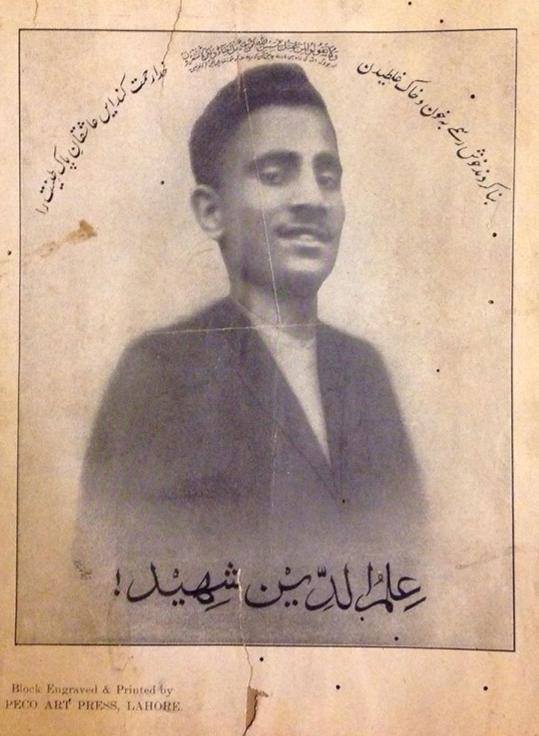 The only Photograph of Ghazi Ilam Din Shaheed - #Lahore |
Mohammad Ilm Din was immediately given the title “Hazrat Ghazi” (Honourable Slayer of Infidels/Protector of Islam) and “Shaheed (Islamic Martyr) “ by Muslims and around 600,000 people attended his funeral. Many Islamic leaders like Mohammad Ali Jinnah and Allama Iqbal also attended his funeral where Iqbal was infact one of the carriers of the funeral bier. At that moment, Iqbal said, “Asi wekhde reh gaye, aye Tarkhaana da munda baazi le gaya” (The educated people like us just could do nothing, while this carpenter”s son scored a point).
Unsurprisingly, Ilm-ud-Din has been glorified in Pakistan as a great Islamic hero, a holy warrior, a ghazi, a shaheed, etc. A film was made in 1978 lionizing him and villainizing Mhashay Rajpal.
There is a mosque commemorating his “great deed”, In February 2013, the Chief Justice of the Lahore High Court heard arguments on the maintainability of a petition seeking the reopening of an 84-year-old Ilm-ud-Din case.
In October of the same year in 2013, at the two-day celebrations for the 84th annual Urs of this “Ghazi Ilm Din Shaheed” in the Miani Sahib graveyard, thousands of devotees paid homage to him.
This is the real ugly face of Pakistan which is nothing but hatred towards Kaafirs and love for Islamic Jihadis.
While followers of Jihadi Islam are clear about their ideology and goals, the confused, deracinated and ahimsavadi secular Hindus like Gandhi try to make sense and infact obfuscate gross bigotry and hatred filled in the minds of Jihadi Muslims as freedom of Expression and Right to Religious belief even though the right extends to take other people’s (read ‘Kaafir‘) lives!
Mawlana Zafar Ali Khan said ahead of the burial: “Alas! If only if I had managed to attain such a blessed status!” Allama Iqbal carried the funeral bier along its final journey.
Photo Courtesy: Mr. Munib Iqbal
References
Julia Stephens, The Politics of Muslim Rage: Secular Law and Religious
Sentiment in Late Colonial India, History Workshop Journal, Volume 77, Issue 1
Spring 2014, Pages 45–64
Raj R. A Pamphlet and its (Dis)contents: A Case Study of Rangila Rasul and the
Controversy Surrounding it in Colonial Punjab, 1923–29. History and Sociology
of South Asia. 2015;9(2):146-162
Note: The article has been authored by @Vedic_Revival and @aryasanghi (Twitter usernames)
outlookindia.com
Please Read Part 6 on this Link For Gandhi’s writings in “Young India”:
cslrepository.nvli.in
mkgandhi.org
wikipedia.org
en.wikipedia.org
https://www.vaidikrashtra.page/2019/12/hutaatma-mahaashay-raajapaal-k-Y6cl82.html
https://www.dirghtama.in/2020/08/blog-post.html
 Support Us
Support Us
Satyagraha was born from the heart of our land, with an undying aim to unveil the true essence of Bharat. It seeks to illuminate the hidden tales of our valiant freedom fighters and the rich chronicles that haven't yet sung their complete melody in the mainstream.
While platforms like NDTV and 'The Wire' effortlessly garner funds under the banner of safeguarding democracy, we at Satyagraha walk a different path. Our strength and resonance come from you. In this journey to weave a stronger Bharat, every little contribution amplifies our voice. Let's come together, contribute as you can, and champion the true spirit of our nation.
 |  |  |
| ICICI Bank of Satyaagrah | Razorpay Bank of Satyaagrah | PayPal Bank of Satyaagrah - For International Payments |
If all above doesn't work, then try the LINK below:
Please share the article on other platforms
DISCLAIMER: The author is solely responsible for the views expressed in this article. The author carries the responsibility for citing and/or licensing of images utilized within the text. The website also frequently uses non-commercial images for representational purposes only in line with the article. We are not responsible for the authenticity of such images. If some images have a copyright issue, we request the person/entity to contact us at satyaagrahindia@gmail.com and we will take the necessary actions to resolve the issue.
Related Articles
- Why Hindu-Sikh genocide of Mirpur in 1947 ignored? Why inhuman crimes of Radical Islamists always hidden in India?
- Moplah Genocide of the Malabar Hindus, 1921: Thousands of Hindus slaughtered
- Prophecies of Jogendra Nath Mandal getting real after seventy years of his return from Pakistan
- The Islamic Doctrine of Permanent War: Jihãd and Religious Riot
- Violence Against Minority Hindus in Bangladesh: The Mistier World Of Silence
- Aatish Taseer shows how his ‘jamaat’ has mastery over playing victim, brands Bollywood pro-Modi even as it remains anti-Hindu
- Ban this book "Hindu View of Christianity and Islam" by Ram Swarup - Freedom of Expression
- Calcutta Quran Petition: A petition to ban the Quran altogether was filed 36 years ago, even before Waseem Rizvi petitioned for removing 26 verses from Quran
- Here is a list of 20 incidents where the ‘Jai Shri Ram’ slogan has been misused to turn a random crime into ‘hate crime’
- Supreme Court dismisses plea seeking protection of Hindus from the Muslim community in Mewat
- Wikipedia dismisses Love Jihad as a conspiracy theory by Hindus, but claims reverse Love Jihad against Muslims is real
- Speech of Sardar Patel at Calcutta Maidan in 1948 busts the myth of ‘Muslims chose India’ and is relevant even today
- What is the reality of the Sufis: In Their Own Words
- Operation Polo: When India annexed Hyderabad from the Nizam and Razakars, the suppression of Hindus and the role of Nehru
- On 16th Aug 1946, during Ramzan's 18th day, Direct Action Day aimed to provoke Muslims by mirroring Prophet Muhammad's victory at Badr, Gopal 'Patha', the Lion of Bengal, heroically saved Bengali Hindus & Calcutta from a planned genocide, altering history


















